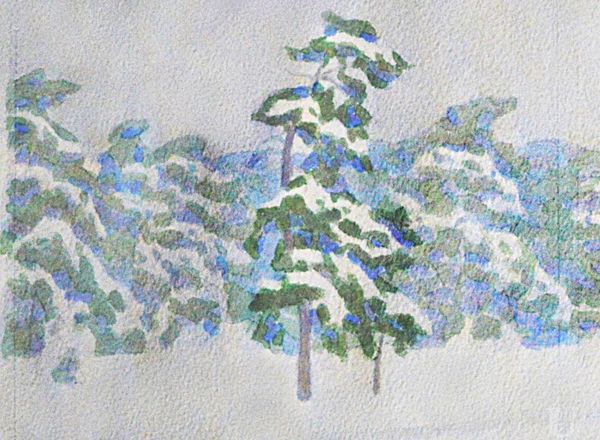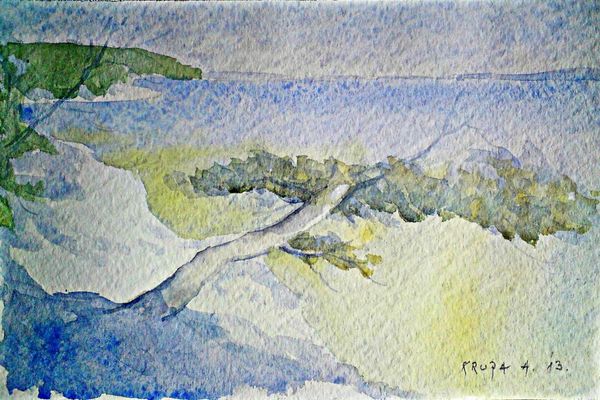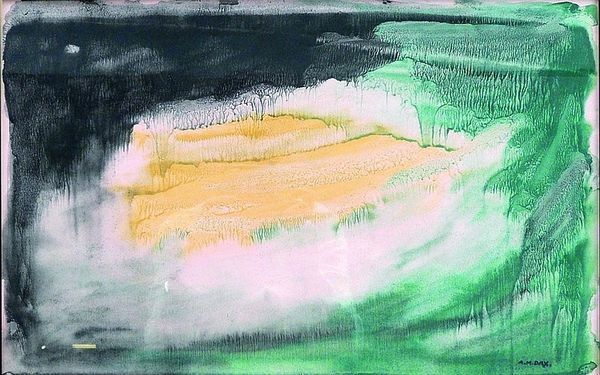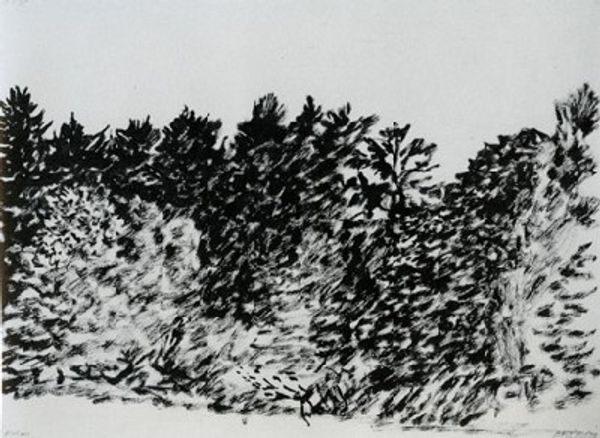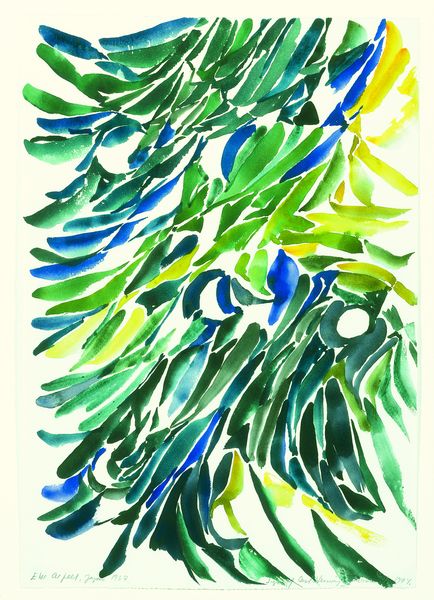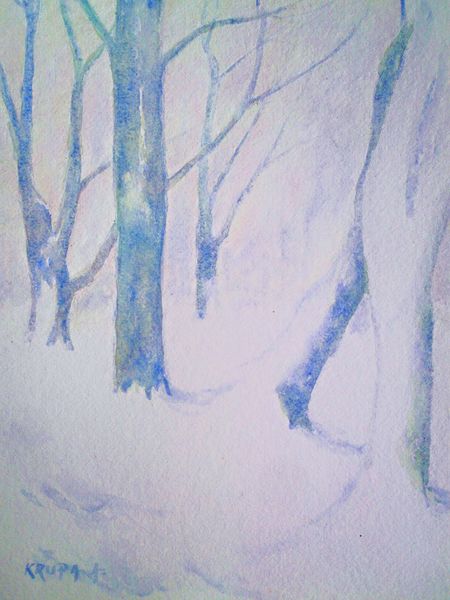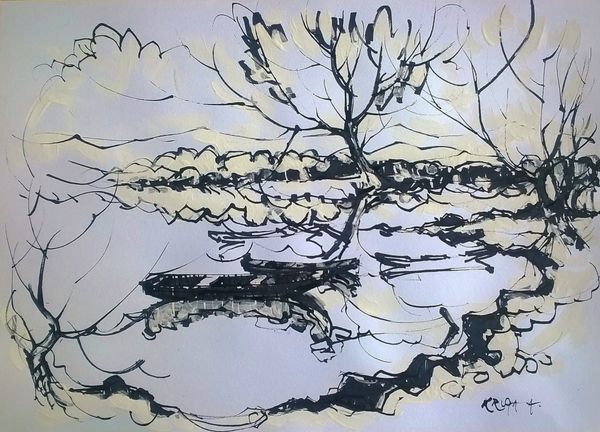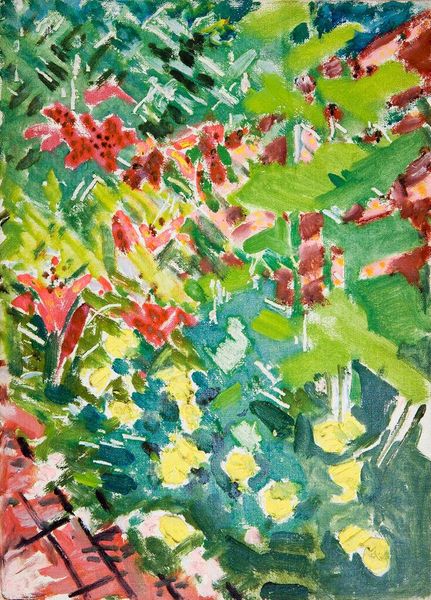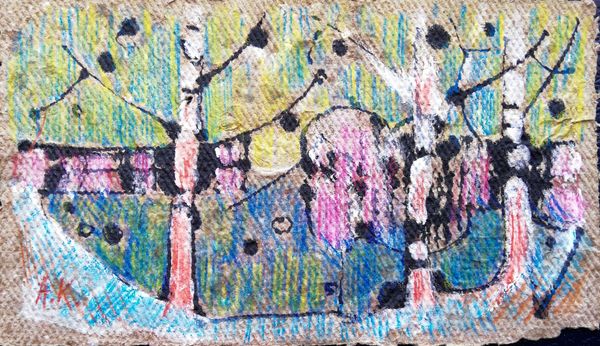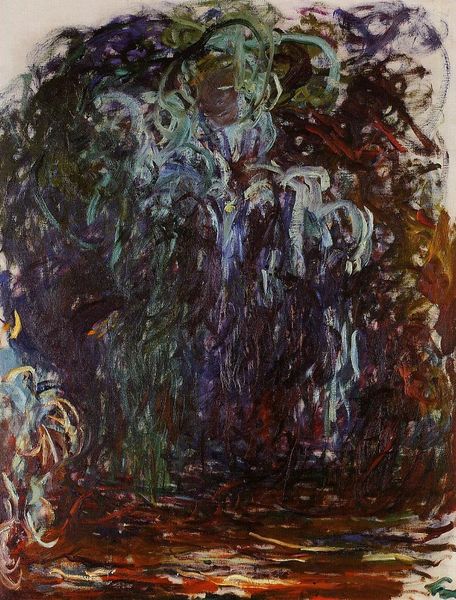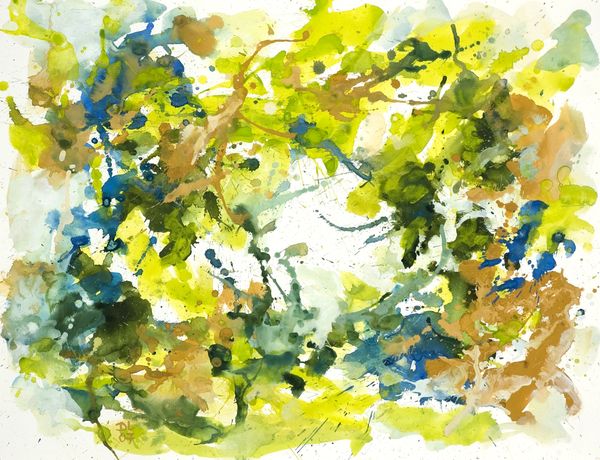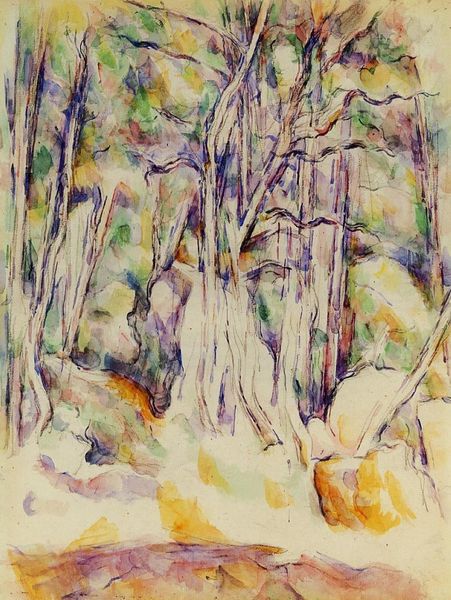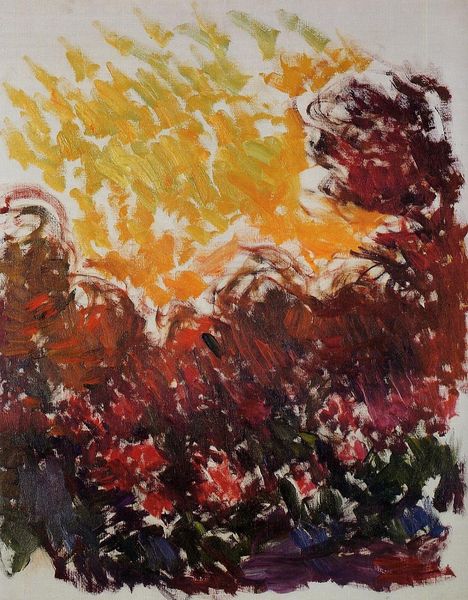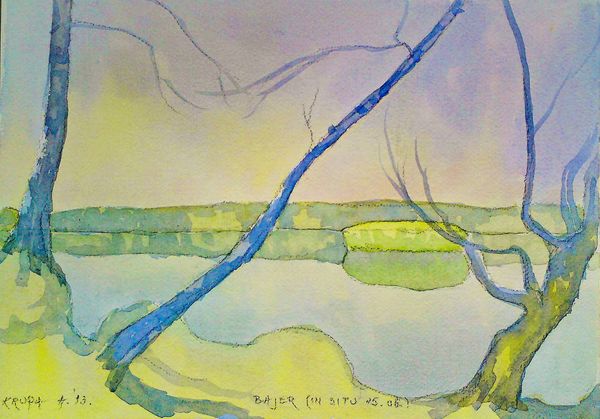
Illustrations to Sergey Yesenin's collection of poems 'Bird-cherry tree' 1970
0:00
0:00
hryhoriihavrylenko
Lebedyn Municipal Art Museum, Lebedyn, Ukraine
painting, watercolor
#
painting
#
landscape
#
impressionist landscape
#
watercolor
#
plant
#
realism
Copyright: Hryhorii Havrylenko,Fair Use
Curator: Let's take a moment to consider Hryhorii Havrylenko's "Illustrations to Sergey Yesenin's collection of poems 'Bird-cherry tree'," created in 1970. It's currently held here at the Lebedyn Municipal Art Museum. Editor: My immediate impression is how muted and subtly expressive the colours are. It’s almost dreamlike in its depiction of a snow-laden forest. What medium did Havrylenko employ to conjure this scene? Curator: Havrylenko chose watercolor for these illustrations. Now, when we situate this work within the context of Soviet Ukrainian art in the 1970s, we see a negotiation between prescribed artistic styles and individual expression. How does the imagery of winter, of these snow-covered trees, resonate with broader themes present in Yesenin's poetry and, perhaps, in Ukrainian cultural identity at that time? Editor: Given the setting, it seems the selection of watercolor emphasizes a process relying heavily on the liquidity of paint, the transparency of layers—all materials interacting with paper. What do you make of this process with an illustration about winter? Curator: Yesenin's poetry often explores themes of longing, nature, and a sense of rootedness – or rootlessness. So, perhaps the artist is tapping into a shared sense of connection to the land. Consider, too, that landscapes were often utilized as a means of subtly expressing national identity when more direct forms of cultural expression were suppressed. Editor: It's true the physical process speaks volumes; the material limitations or capabilities influencing artistic choice becomes critical to analyzing the complete imagery. Does this watercolor's delicate handling perhaps gesture towards an appreciation of nature’s fragility, its vulnerability, while the political climate could impose restrictions? Curator: Precisely. Havrylenko utilizes the medium to create a quiet, introspective space, one that allows for reflection on personal and cultural identity. It prompts us to think about art as a form of resistance and cultural preservation, particularly in contexts where creative expression is mediated by political forces. Editor: Examining the painting in light of the conditions of artistic production shifts our perspective on how artists creatively push limits. Havrylenko seems not to work against but in careful partnership with materials and medium to offer subtle, but insightful, resistance. Curator: Exactly. By understanding both the artistic techniques and the social-political context, we get a much richer reading of this seemingly simple landscape. It is layered with meanings about place, identity, and resistance.
Comments
No comments
Be the first to comment and join the conversation on the ultimate creative platform.
